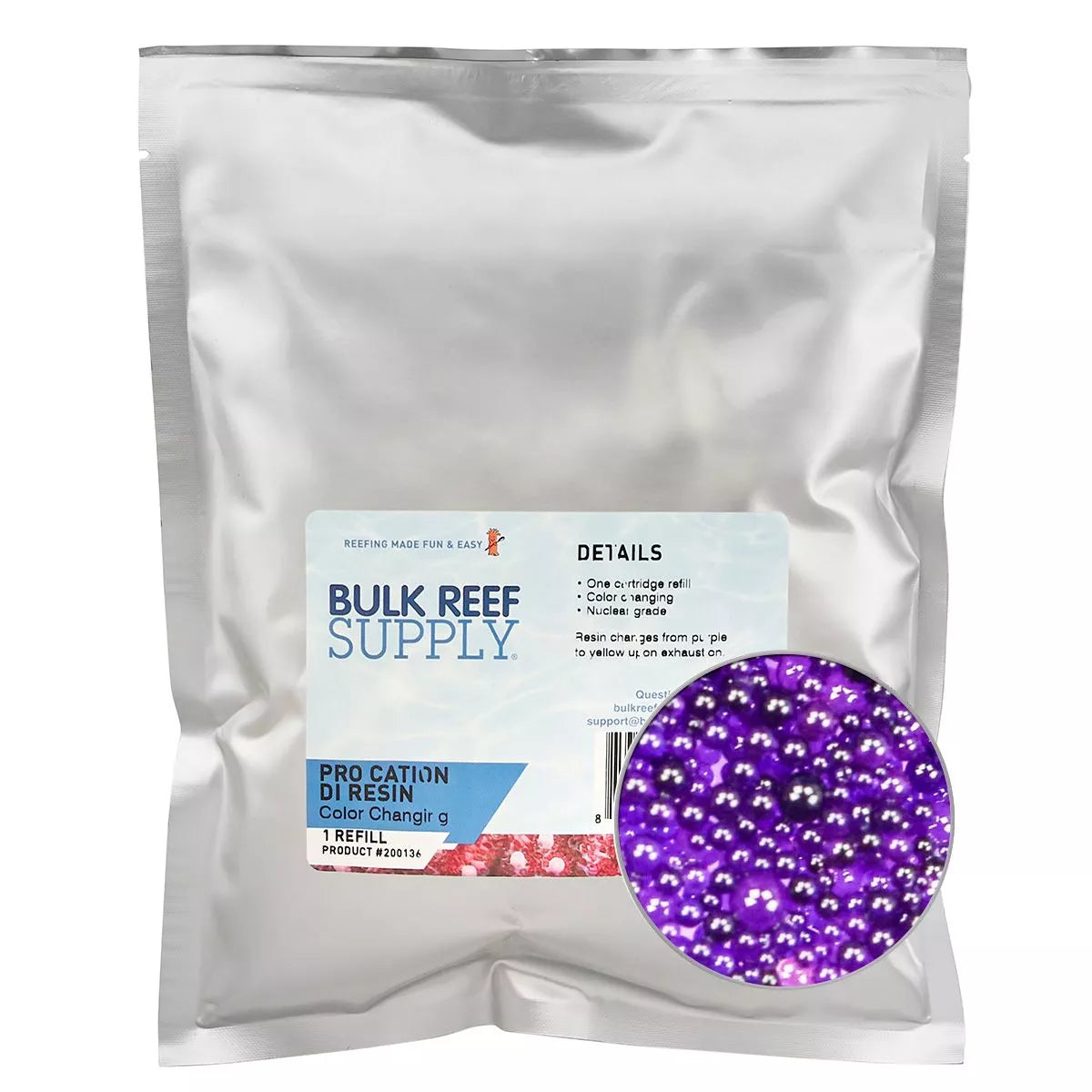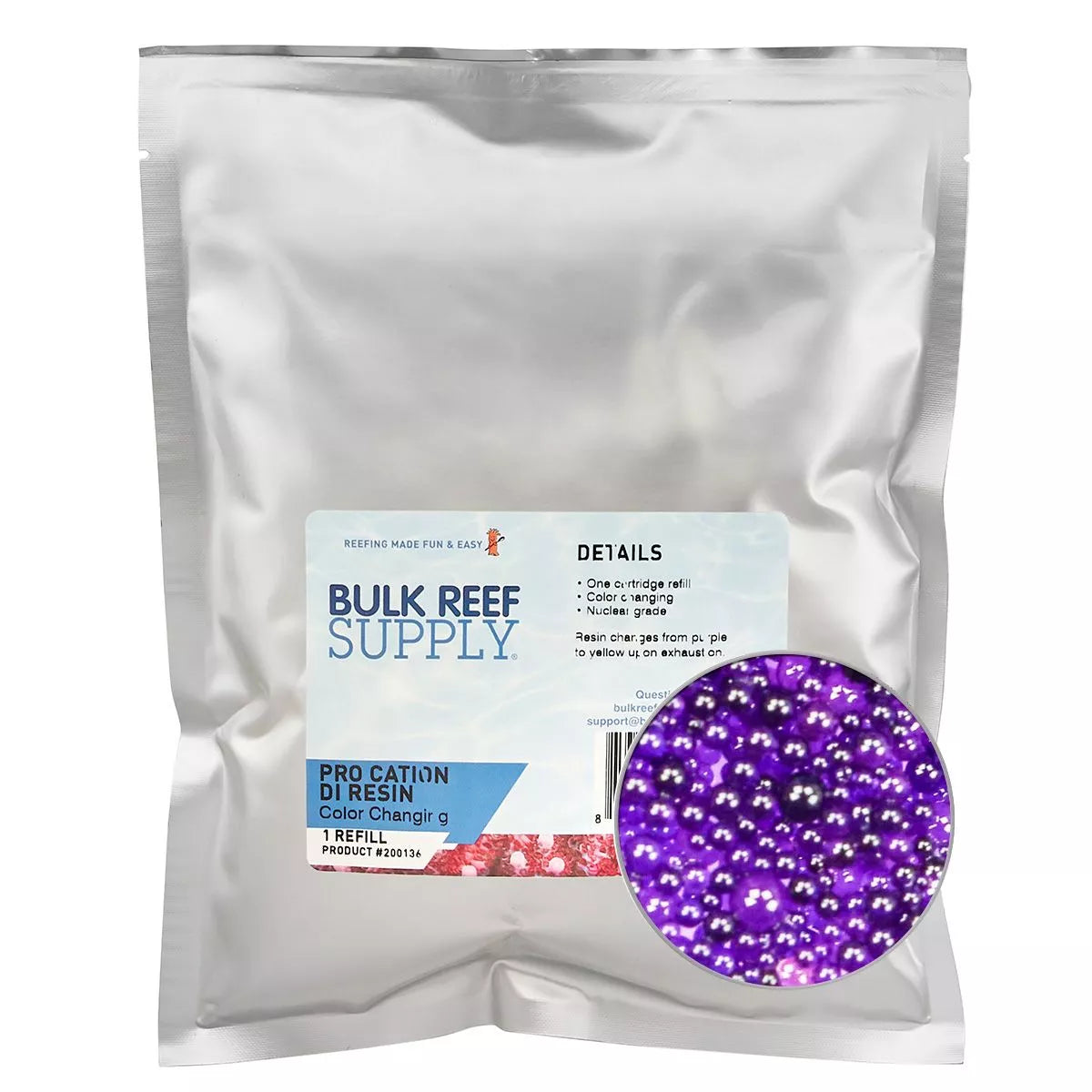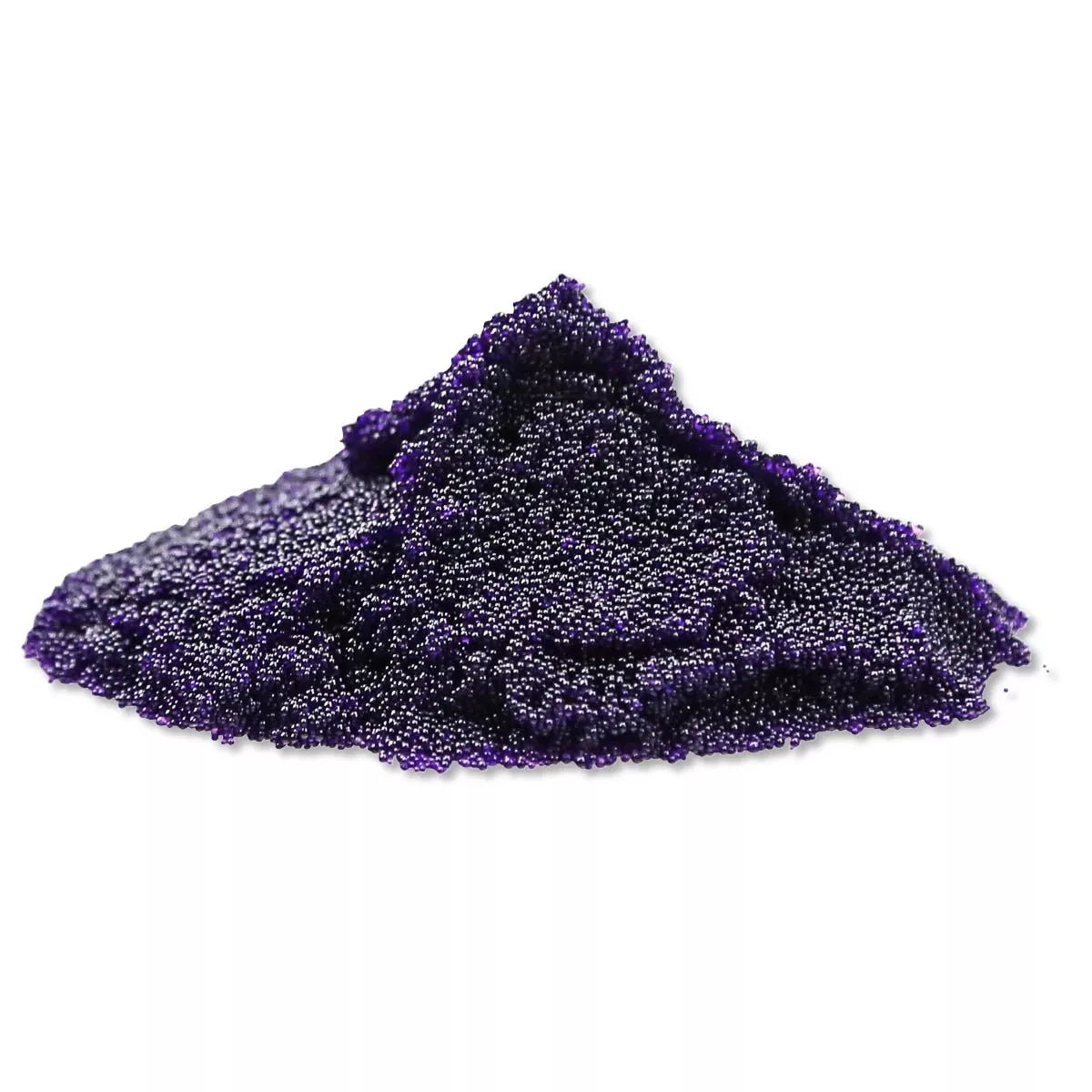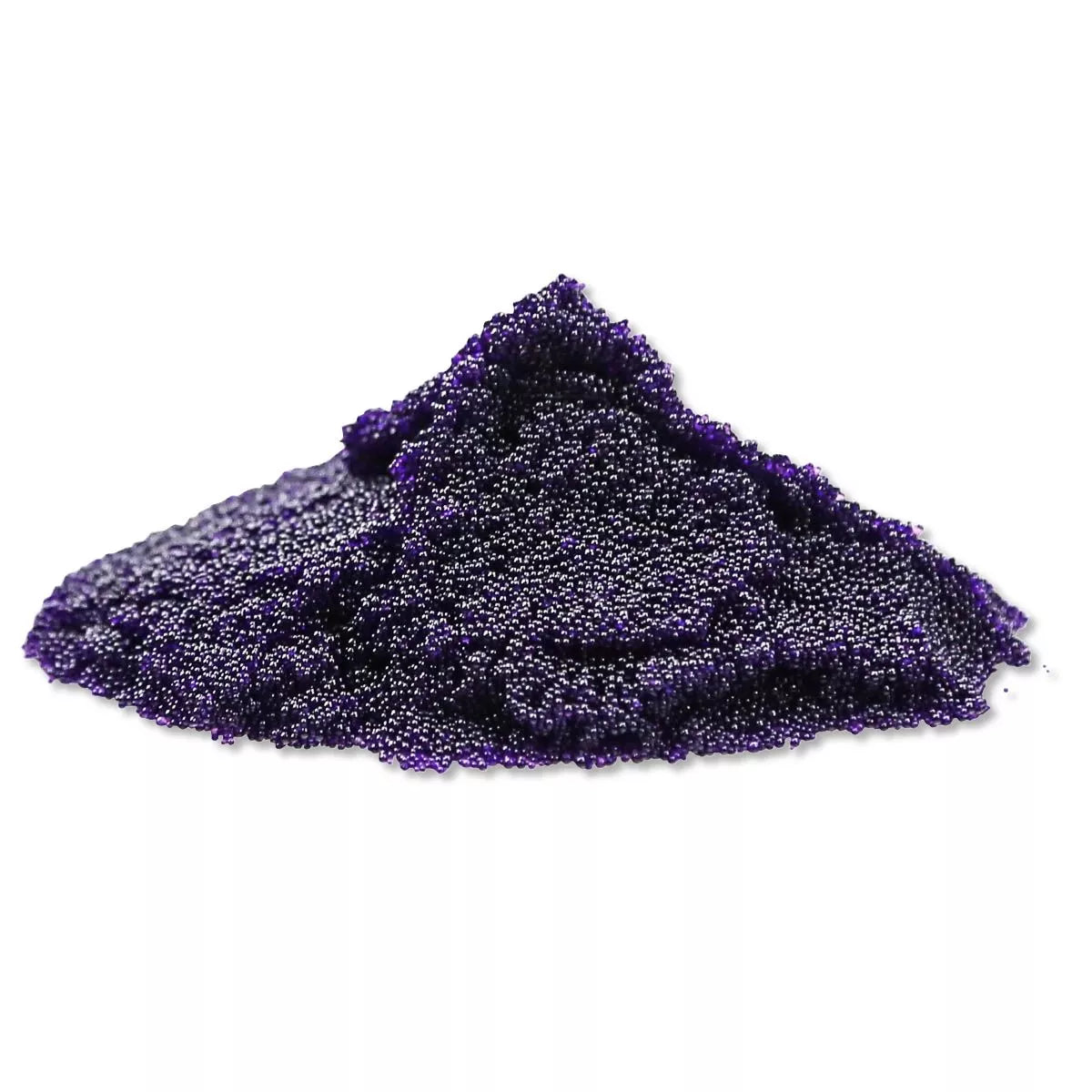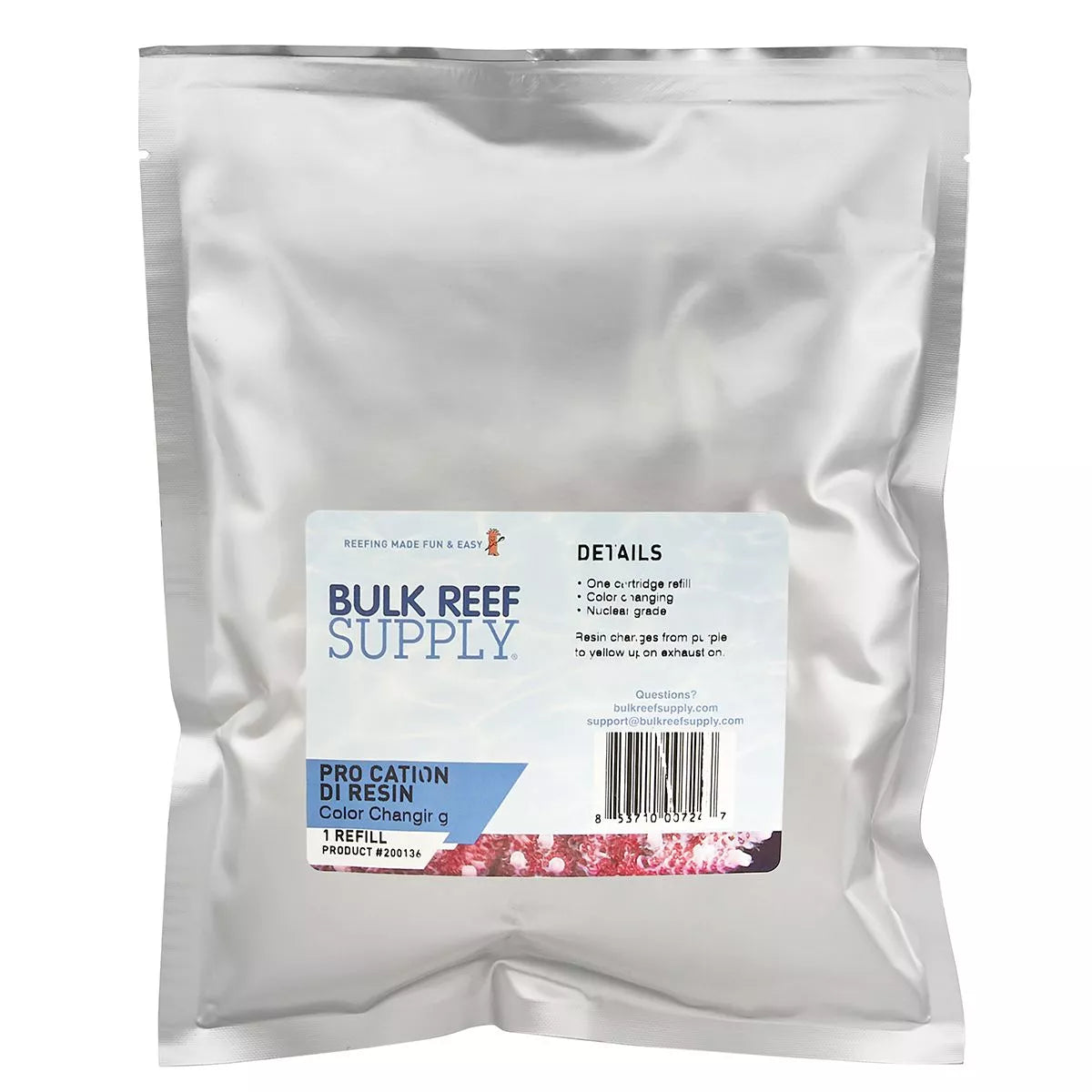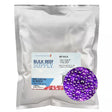PRO Series Cation DI Resin (Color Changing) - Part 1
Shipping & Returns
Shipping & Returns
Free Shipping On Orders Over $49
All orders over $49.00 ship free using a combination of USPS, FedEx and UPS. All in stock items will ship out within 24-48 hours Monday-Friday. Drop ship items such as large aquariums, large sumps and full aquarium systems can take 1-2 weeks to arrive depending on availability. This shipping offer is only available in the 48 contiguous US. Not valid on wholesale orders.
$7.99 Flat Rate Shipping On Orders Under $49
If your order is under $49.00 shipping is only $7.99 using a combination of USPS, FedEx & UPS. All in stock items will ship out within 24-48 hours Monday-Friday. This shipping offer is only available in the 48 contiguous US. Not valid on wholesale orders.
Drop Shipping
There are a few items that are drop shipped directly from the manufacturer. Any item that drop ships will be marked on the product page. Large items like aquariums, stands, and lights may take anywhere from 1-3 weeks for final delivery.
Returns
We're happy to accept returns of new products in their original packaging within 60 days of original purchase for a full refund. Just give us a call or send us an email, you must receive an RMA number before shipping back your products. Returns received without an RMA number will be refused and sent back.
Returned items must be sent back to us in new and unused condition in the original packaging along with all accessories, warranty cards, manuals, software, cables, etc.
Special order items are non returnable and are marked on the items page.
Returns For Unused Open Box Products
Hold on to your packaging! If you purchased a product in the last 30 days that's opened but unused, has never seen saltwater and still has all of its original packaging (warranty cards, manuals, accessories, etc.) we can accept your return and offer store credit or a refund to your original form of payment minus a small 15% restocking fee.
- Products must be returned in the original packaging. Products returned with broken manufacturer seals, damaged or altered packaging, missing packing material, warranty cards, manuals and/or accessories will be treated as an unused but open item.
- Items purchased as new but have been opened and received more than 30 days after the original purchase will be returned to you free of charge.
- Items that show any sign of exposure to water or use, returned with damaged or altered packaging or missing packing material including warranty cards, manuals and accessories are not eligible for return and will be returned to you free of charge.
- All items sold under clearance, blowout, or liquidation are final and not eligible for return.
Manufacturer Defects & Warranties
Sometimes items just don't work out of the box, contact us and we'll work with you to make it right!
If your product arrives non-functional due to manufacturer defects, it may be exchanged for the same product within 30 days at no cost to you!
Purchased more than 30 days ago, but need warranty support? We'll ensure your issue is handled fast and efficiently by acting as the first point of contact. We'll introduce you to the best contact at the manufacturer, and make sure the manufacturer knows of the issue you're encountering!
Please Note:
- Shipping & Delivery fees are non-refundable.
- Gift Cards are non-refundable.
- Return shipping may be deducted from your refund.
- Please retain all product packaging and tags until you are completely satisfied with your purchase.
- Please open all packages and inspect all items for damage immediately upon arrival. Damages must be reported within 3 days of the reported delivery.
Changes from Purple to Amber when exhausted
Cation Single Bed Color Changing DI Resin is great for people that want to be more efficient with their deionization resin usage. Single bed resins do require the use of a cation and anion resins followed by a mixed bed resin, but produce much better results, and are much more efficient!
Size: 1.25 lb Single 10" Cartridge Refill
Deionization Resin
Reverse osmosis systems can remove up to 99% of contaminants from your water, however, they can never remove 100% which is the overall goal for reef tank water. That is where deionization (DI) resin comes into play, by taking place as the last "filter" of a RODI system after the membrane. DI resin is ionically charged as either a cation (+) or anion (-) to exchange hydrogen or hydroxide molecules for contaminants like phosphate, silica, nitrate, sulfate, aluminum, iron, calcium, etc allowing you to achieve 0 TDS water for your aquarium and help eliminate any possible water quality issues. You may or may not know that there are multiple types of DI resin available from mixed bed to single bed resins that you can use depending on what the specific goal is for your water and what is in the water after the RO membrane.
Mixed or Single Bed
Single bed DI resins come in many different flavors, but at heart only contain a single cation or anion that makes up the entire media bed. Single bed resins are commonly used in household water softeners and other applications that require either the positive or negative ion to be removed and exchanged for hydrogen or hydroxide ions. The concentration of a single bed lets you focus on specific issues that you may have with your water without wasting extra resin like a mixed bed resins. Mixed bed resins contain both cations and anions in a single bed of media that will remove both positively and negatively charged ions from the water column. Mixed beds are very common in residential RODI system that is used for reef tanks and other types of aquariums since they are easy to use, but when it comes to efficiency and cost savings, single bed systems are the clear winners.
Cation or Anion
Cation = Positive Charge
Anion = Negative Charge
Choosing a single or mixed bed resin can be hard especially if you do not know exactly what is in your water or how a RO membrane will filter it. In most cases, you can use either the cation or anion mixed bed resins but may notice that a TDS meter is showing that the resin is exhausted before the color has changed completely. That is more than likely due to an excess of the opposite type of ion in your water when compared to the color changing dye used in that resin. If this is happening to you, changing to a resin with an opposite indicating dye of your current will help with visual monitoring as it becomes exhausted.
Mixed Bed Cation Resin (purple) - Most commonly used after single bed resins to polish any remaining contaminants. It contains both positive and negatively charged ions and will change from purple to amber as the cation resin is depleted. It is also perfect for single canister DI systems that have an excess of positively charged ions like calcium, magnesium, aluminum, ferrous and ferric iron.
Mixed Bed Anion Resin (blue) - The most commonly used resin in single or dual canister RODI systems and contains both negative and positively charged. The anion beads contain a blue color changing indicator that will turn to an amber color when it is exhausted. This resin is excellent for systems that have an excess of negatively charged ions that are not removed by the membrane, like phosphates, nitrates, sulfates, etc.
Single Bed Cation Resin (purple) - Contains only cation beads that focus on removing positively charged ions from the water that passes through it. As the resin becomes depleted it will change from a purple to amber letting you know at a glance when it is depleted. This is most commonly used as the first stage in a single bed DI system.
Single Bed Anion Resin (blue) - Anion resin focuses on removing negatively charged ions and has a blue color changing dye that will change to amber as it becomes depleted. Single bed anion resin is commonly used as the second stage in a single bed DI system.
Color Changing
A majority of DI resin has a color changing indicator that will change to a light amber color as the resin becomes exhausted. The dye is simply a pH indicator that is stable at high or low pH levels but will become translucent as the pH of the resin becomes neutral and the resin becomes exhausted. With single bed resins, there are some instances where your water may have a high or low pH, and can cause the color indicating dye to not become translucent, and that is why it is imperative to use a TDS or conductivity meter to know exactly when your resin is exhausted.
High pH water may interfere with the indicating dye contained in anion (blue) single bed resin.
Low pH water may interfere with the indicating dye contained in cation (purple) single bed resin.
Long Shelf Life
DI resin begins depleting when exposed to air. To avoid this, we package all of our DI resin in foil-lined 4mm Mylar bags to prevent exposure to air that may deplete the resin while it is waiting to be used. Our resin can remain packaged this way for 2 years without losing its capacity. Our bulk DI bags are perfect for reefers who process a lot of water or otherwise go through resin quickly. Keep in mind once the seal is opened the resin can start to deplete. Otherwise, purchase the single refill packs for optimal freshness up to two years.
Specifications:
Polymer Structure: Styrene/DVB
Polymer Type: Gel
Functional Group: Sulfonic Acid (Cation)
Physical Form: Spherical Beads
Ionic Form (as shipped): Hydrogen
Total capacity: >1.80 meq/mL (H form)
Water Retention: 47 to 56 percent (Hform)
Screen Size Distribution: 16 to 50 (U.S. Mesh)
Resin Color: Purple (Cation) / Amber (Anion)
Maximum Fines Content: 1 percent (less than 50 Mesh)
Minimum Sphericity: 85 percent
Uniformity Coefficient: 1.6 (Approximate)
Resin Color: Purple
To get maximum life from your DI resin please takes the following steps:
- Ensure optimal operation of your RO membrane. The higher your membranes rejection rate the fewer TDS your product water will contain resulting in longer lasting resin. The best way to keep the membrane rejection rate up is to monitor and change your prefilters appropriately as well as maintain at least 50psi going into the membrane.
- Ensure the resin is packed in the cartridge securely. The resin should be packed very tightly. When squeezed, there should be almost no flex to the cartridge.
- The initial couple minutes of water from your RO membrane will always be high, this is commonly referred to as TDS creep. Diverting the first few minutes of water down the drain can often greatly reduce DI resin consumption.
- Maintain low levels of carbon dioxide in your water supply. Excess carbon dioxide will deplete DI resin quickly. If you are depleting resin quickly and have already: addressed the two options above, excess carbon dioxide is the likely culprit. You have two choices:
- Collect the water coming from your RO system in a large container, add a powerhead or airstone and allow the CO2 to gas off. Then pump the water through your DI resin.
- Skip all that mess and just buy resin in bulk.

